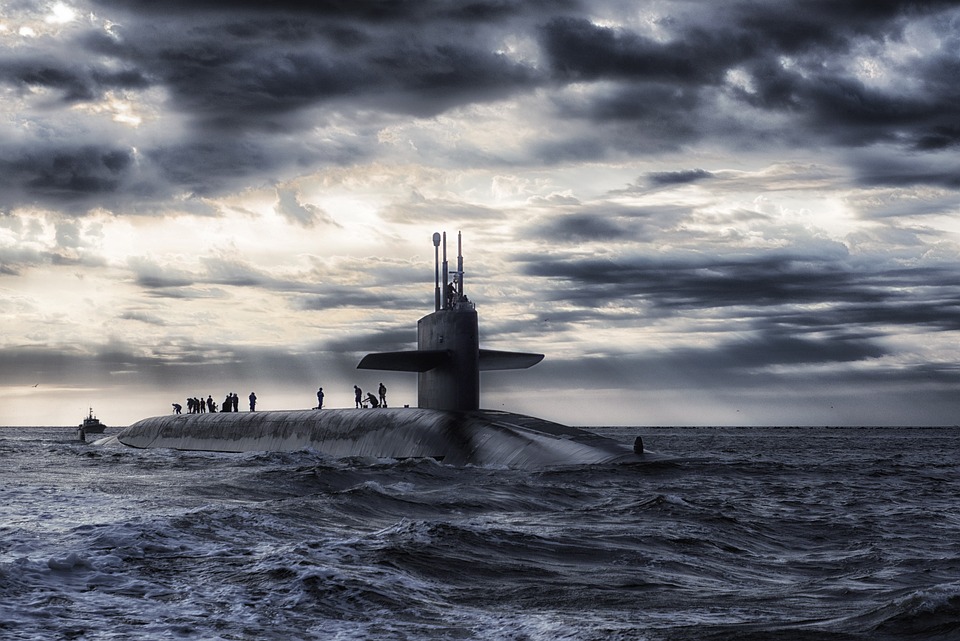The History of the U.S. Navy
The U.S. Navy is the naval warfare service branch of the United States Armed Forces. It was established on October 13, 1775, during the American Revolutionary War, when the Continental Congress authorized the purchase of two ships to protect American merchant ships from British naval forces.
Since its inception, the U.S. Navy has grown to become one of the largest and most powerful naval forces in the world. It has played a crucial role in major conflicts such as the War of 1812, the Civil War, World War I, World War II, the Korean War, the Vietnam War, the Gulf War, and more recently, the War on Terror.
The Organization of the U.S. Navy
Command Structure
The U.S. Navy is divided into several fleets and commands, each responsible for different regions of the world. The highest-ranking officer in the Navy is the Chief of Naval Operations (CNO), who serves as the principal military advisor to the Secretary of the Navy. Below the CNO are the various fleets, including the Pacific Fleet, the Atlantic Fleet, and the Naval Forces Central Command.
Special Operations Forces
The U.S. Navy also includes Special Operations Forces, such as the Navy SEALs (Sea, Air, and Land Teams), who are highly trained in counterterrorism, hostage rescue, and reconnaissance missions. The SEALs are known for their elite physical fitness, mental toughness, and ability to operate in any environment, from sea to land to air.
The U.S. Navy’s Fleet and Assets
Ships
The U.S. Navy operates a wide range of ships, including aircraft carriers, destroyers, submarines, amphibious assault ships, and more. The most iconic of these are the aircraft carriers, which are the largest warships ever built and serve as mobile airfields for fighter jets and helicopters.
Destroyers, on the other hand, are smaller yet highly versatile warships that are capable of operating independently or as part of a fleet. Submarines are stealthy underwater vessels that can carry missiles and torpedoes and are used for covert reconnaissance and intelligence gathering.
Aircraft
In addition to ships, the U.S. Navy also operates a vast array of aircraft, including fighter jets, helicopters, surveillance planes, and more. The Navy’s aviation forces are crucial for conducting reconnaissance, search and rescue missions, and providing air support to ground troops.
The U.S. Navy’s Role in National Defense
The U.S. Navy plays a critical role in protecting the United States and its interests around the world. It is responsible for maintaining freedom of navigation, deterring aggression, and projecting power to support national security objectives.
During times of conflict, the Navy helps to secure sea lanes, conduct airstrikes, conduct amphibious assaults, and provide humanitarian assistance. In peacetime, the Navy conducts training exercises, patrols international waters, and participates in joint military operations with allies and partners.
The Future of the U.S. Navy
As technology continues to evolve, the U.S. Navy is constantly adapting to new threats and challenges. Future Navy ships may incorporate advanced weapons systems, stealth technology, artificial intelligence, and unmanned systems to enhance their capabilities and effectiveness.
The Navy is also investing in cyber warfare capabilities to protect its networks and infrastructure from cyber attacks. Additionally, the Navy is exploring new ways to harness renewable energy sources and reduce its carbon footprint to promote sustainability and environmental stewardship.
Conclusion
The U.S. Navy is a formidable force that plays a crucial role in safeguarding America’s national security interests and promoting peace and stability around the world. With its advanced weaponry, skilled personnel, and unwavering dedication to duty, the Navy stands ready to defend the nation and its allies against any threat that may arise.
As the Navy continues to evolve and adapt to new challenges, it remains a cornerstone of U.S. military power and a symbol of American resolve and strength. With its unmatched capabilities and global reach, the U.S. Navy will continue to be a force for good in an uncertain and ever-changing world.
Overall, the U.S. Navy is a vital component of America’s national defense strategy, and its sailors are true heroes who serve with honor, courage, and commitment. Their sacrifices and dedication deserve our utmost respect and gratitude.


